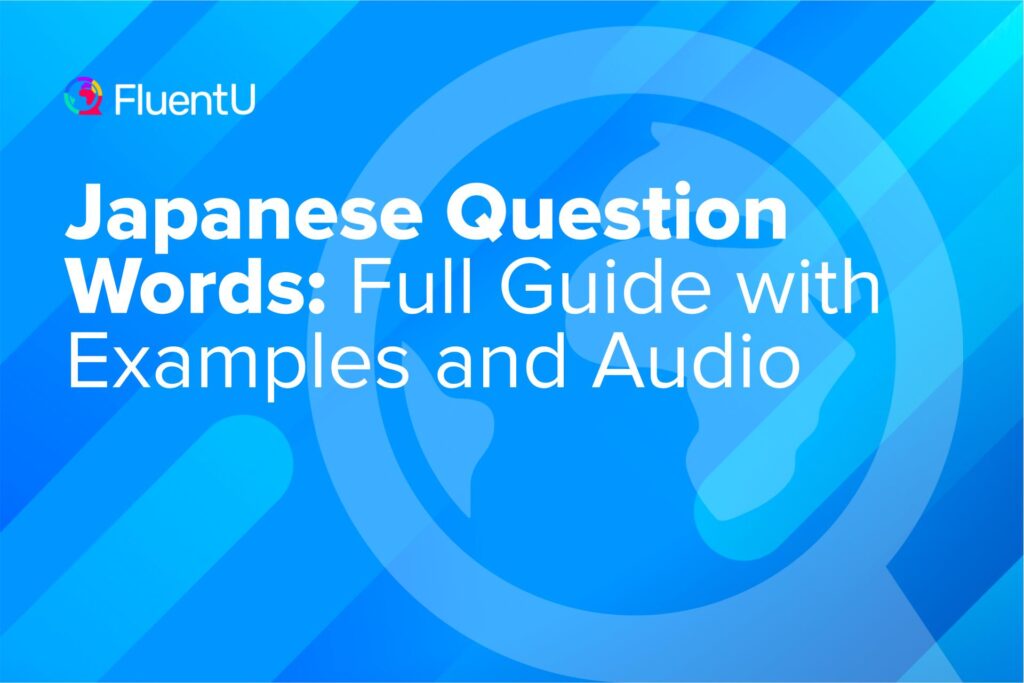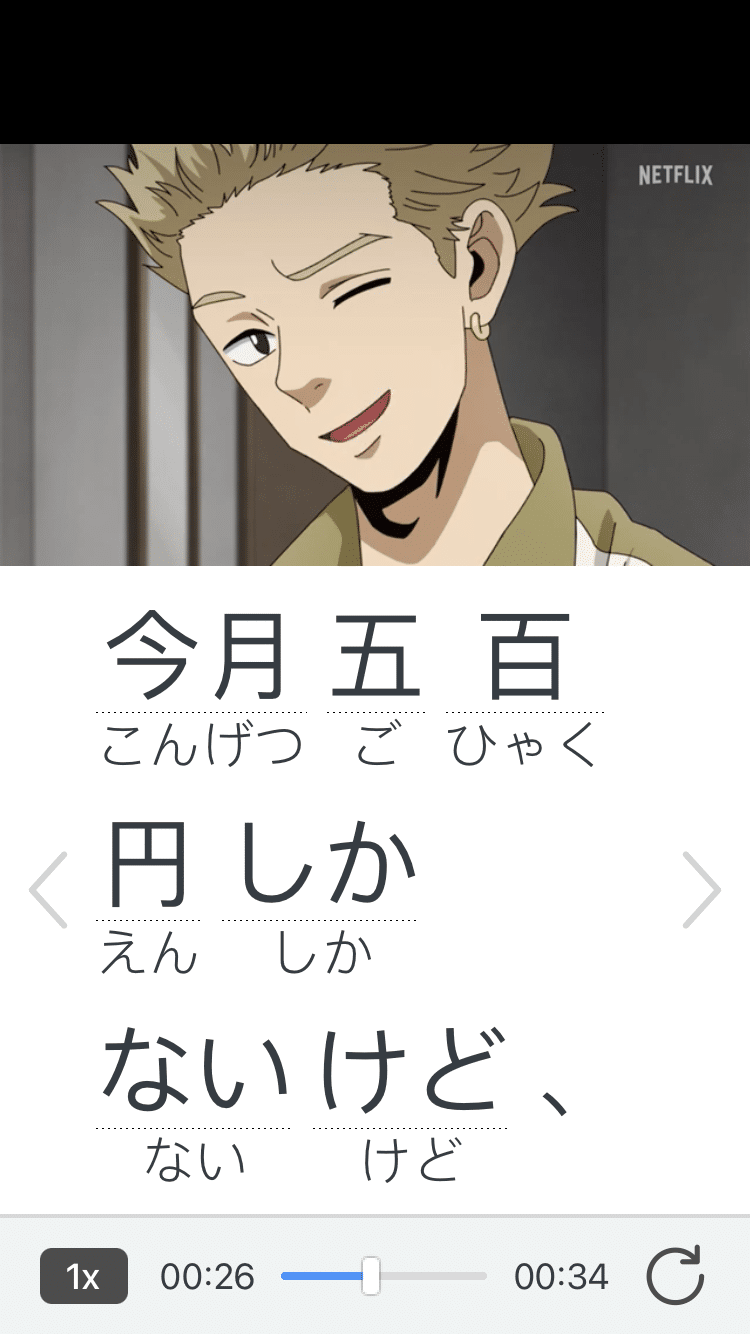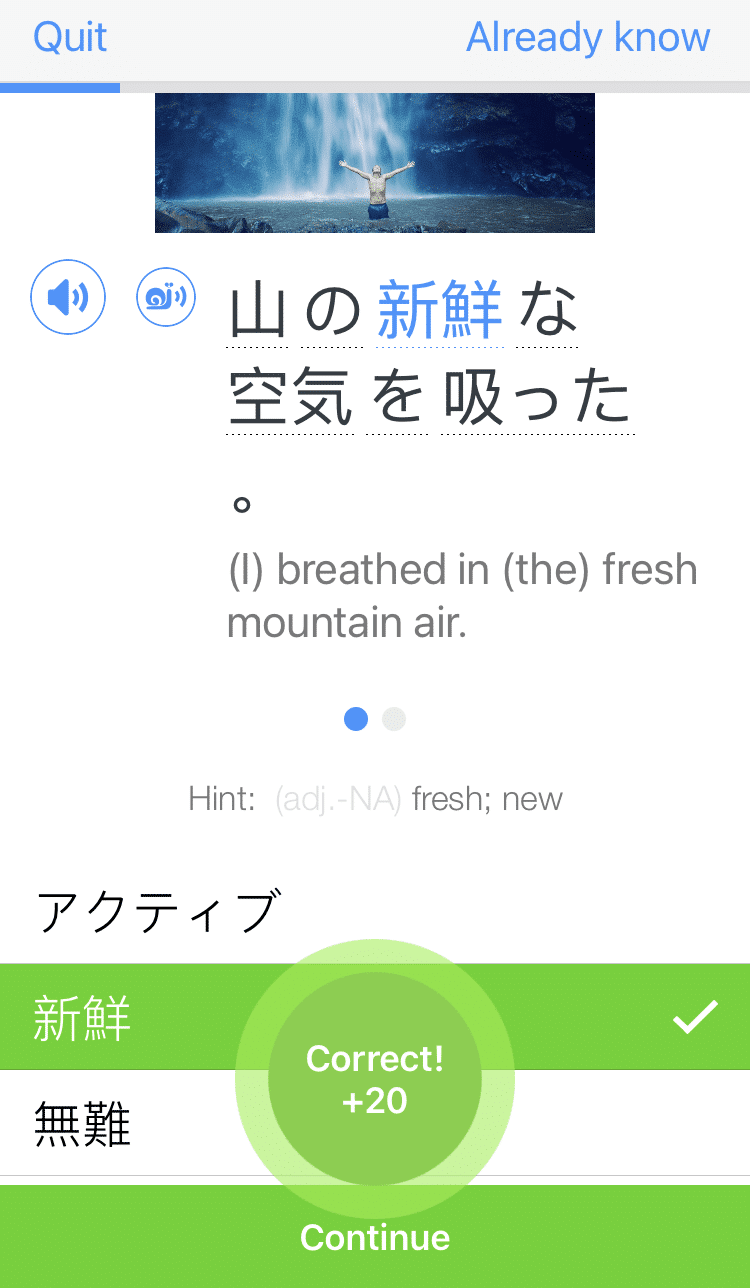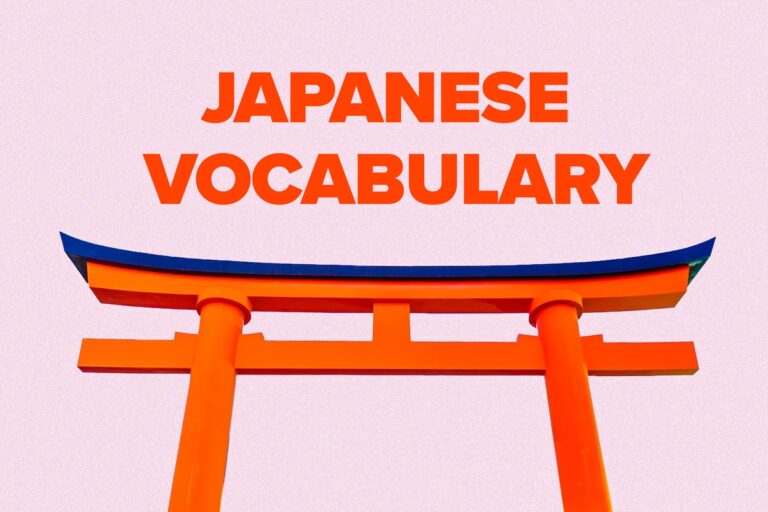Japanese Question Words: Full Guide with Examples and Audio

Questions (and the words used to form them) are essential building blocks for communication.
You can’t always rely on wild gesticulations and prayers, hoping that the other person will understand you!
Fortunately, you can learn the basics with a few words that’ll enable you to ask a wide range of formal or informal questions.
In this post, I’ll show you all of the Japanese question words you need, with explanations and examples of how to use them.
Download: This blog post is available as a convenient and portable PDF that you can take anywhere. Click here to get a copy. (Download)
Using Japanese Question Words
The first step to getting acquainted with Japanese questions is learning the vocabulary. Here are the main question words you need to know:
| Question Word | Translation | Example |
|---|---|---|
| だれ | Who | 誰が電話したの? (Who called?) |
| だれの | Whose | 誰のですか? (Whose is it?) |
| なに
何 (なん) | What | 何をしますか?
(What are you doing?) 何ですか? (What is it?) |
| どれ
どちら | Which Which (polite/formal) | どれがいいですか?
(Which one is good?) どちらがいいですか? (Which one is good?) |
| いつ | When | パーティーはいつですか? (When is the party?) |
| どこ | Where | どこに住んでいますか? (Where do you live?) |
| なぜ | Why | なぜ悲しいの? (Why are you sad?) |
| どう | How | どうやって作られているのでしょうか? (How is it made?) |
In the sections below, we’ll dig deeper into each question word and how to use them.
Who/Whose
First up is the question word regarding persons:
誰 (だれ) ― Who
It’s used much the same way as in English. For example:
それは誰ですか? (それは だれですか?) ― Who is that?
誰が私のイチゴを食べた? (だれが わたしの いちごをたべた?) ― Who ate my strawberry?
However, when it comes to the possessive form, “whose,” Japanese structure deviates from English.
Rather than declining the pronoun as we do in English, Japanese adds the particle の to show possession. This particle goes right after the root pronoun, 誰 (だれ) to make “whose”:
誰の (だれの) ― Whose
これは誰の本ですか? (これは だれの ほんですか?) ― Whose book is this?
What
These are the two most common ways to express the question word “what”:
- 何 (なに) ― What
昨日は何をしましたか? (きのうは なにをしましたか?) ― What did you do yesterday?
- 何 (なん) ― What
何ですか? (なんですか?) ― What is it?
These two forms use the same kanji, mean the same thing and even sound very similar. So why are there two?
Simply put, auditory aesthetics and flow. In writing, there’s no difference between them; they’re the same word. But the “i” at the end sometimes gets dropped when speaking to help smooth out the sound of words, depending on what they’re situated between.
So, how does one know when to use なに vs. なん when speaking? Well, the best way is to really just get a feel for it by listening to fluent speakers since it’s an evolution of speech and pronunciation rather than set grammar. You’ll also find a few examples throughout this post.
Which
There are also two ways to indicate “which”:
- どちら ― Which
寿司かラーメン、どちらがいいですか? (すしか らーめん、どちらが いいですか?) ― Which is better, sushi or ramen?
- どれ ― Which
田中さんの家はどれですか? (たなかさんの いえは どれですか?) ― Which house is Tanaka’s?
The reason for the difference between these two is much more straightforward. どちら is for “which” between two things, while どれ is for more than two.
When
Like in English, you can ask “When?” or “What time?” in Japanese:
- いつ ― When
いつ日本に来ましたか? (いつ にほんに きましたか?) ― When did you come to Japan?
- 何時 (なんじ) ― What time
何時ですか? (なんじですか?) ― What time is it?
何時 (なんじ) is one of those “what”-based words where the “i” is dropped from 何 (なに) that was mentioned earlier. 何 (なに) + 時 (じ) literally means “what hour.”
Where
The vocabulary for “where” is fairly direct:
どこ ― Where
トイレはどこですか? (といれは どこですか?) ― Where is the bathroom?
Why
The question word “why” has a number of iterations in Japanese. The first two essentially mean the same thing but vary in formality.
- なぜ ― Why
なぜ電車は遅れていますか? (なぜ でんしゃは おくれていますか?) ― Why is the train late?
- どうして ― How come
どうしてこのパンは黒いですか? (どうして このぱんは くろいですか?) ― Why is this bread black?
The third is trickier:
- 何で (なんで) ― For what reason
何で私に嘘をついたの? (なんで わたしに うそをついたの?) ― Why did you lie to me?
The complication is due to the fact that 何で can mean both “why” and “how,” depending on the context.
One way to help separate them and make yourself clear when speaking is to reserve 何で (なんで) for “why” and ask “how” by combing 何 (なに) and the particle で, which together make “by what means.” (Or you could just use one of the “how” words covered in the next section.)
Both 何で (なんで) and どうして are more informal. Use なぜ for polite conversation.
How
As seen previously, some question words will have various instantiations or different endings added onto the same root. This one does both.
- どう ― How
どうですか? ― How is it?
- どうやって ― How do you do it
ハンバーガーをどうやって食べますか? (はんばーがーを どうやって たべますか?) ― How do you eat a hamburger?
- いくら ― How much
この靴はいくらですか? (このくつは いくらですか?) ― How much are these shoes?
- いくつ ― How many
いくつ欲しいの? (いくつ ほしいの?) ― How many do you want?
Though there are several ways of asking “how,” they all have different flavors and are appropriate for different situations.
Creating Simple Formal Questions
Now that you’re familiar with the basics of grammar for asking questions, we can move on from merely recognizing questions in Japanese to creating our own.
Knowing that ending a sentence with か designates an interrogative makes it easy to turn a simple statement into a simple question.
- 好きです。 (すきです。) ― I like it.
好きですか? (すきですか?) ― Do you like it?
- 彼女はそこにいます。 (かのじょは そこに います。) ― She is there.
彼女はそこにいますか? (かのじょは そこに いますか?) ― Is she there?
It’s important to note that these examples are in the formal and polite vein, utilizing both the copula of です and ーます as well as the か particle; both must be present for a polite question.
Dropping the particle renders it a statement rather than a question, while leaving out the copula makes for an unnatural sentence.
Creating Simple Informal Questions
Informal Japanese question constructions can be easier than formal ones in some ways, but also involve nuance. For that reason, it’s best to stick with the polite form when you’re first learning to ask questions.
However, it’s important to at least be able to recognize questions with common informal structures as well.
The simplest informal version drops both the copula and particle, relying on intonation when speaking and question mark punctuation in casual writing to convey a question.
暑い (あつい) ― Hot
暑い? (あつい?) ― Hot?
Another possibility is to still use the copula, either the formal (conjugated) or informal (root) form, along with intonation or punctuation, but without the particle.
彼は外にいる。 (かれは そとにいる。) ― He is outside.
彼は外にいる? (かれは そとにいる?) ― Is he outside?
Lastly, there’s another particle that can be used at the end of a sentence to make an informal question: の. Though more often utilized by women and children, it’s not necessarily out of bounds for usage by men.
いい ― Good.
いいの? ― Is it good/ok?
How to Identify Questions in Japanese
With written Japanese, determining whether a sentence is a question or not will vary depending on the formality of the medium. In more casual communication channels such as texting, emails, manga and creative writing, there will be a question mark just like in English.
However, question marks are nonexistent in formal Japanese texts and all sentences, including questions, end in the Japanese full stop. (。) So, how is one supposed to know whether it’s a question or not in such settings?
Well, just as the particles は and を mark the topic and direct object respectively in Japanese grammar, か (ka) is the particle that indicates a question and will be found at the end of the sentence, just before the full stop.
か can be found in other parts of a sentence as a particle as well, but in those cases, it serves a different purpose; only when it’s at the end of a clause or sentence is it a question.
As for spoken Japanese, rising intonation at the end of a sentence indicates a question, just like in English. Additionally, the か particle at the end of a sentence is still featured prominently when speaking politely and formally, though it’s often dropped in more casual conversation. You can hear this in action by watching videos on the immersive learning platform, FluentU.
FluentU takes authentic videos—like music videos, movie trailers, news and inspiring talks—and turns them into personalized language learning lessons.
You can try FluentU for free for 2 weeks. Check out the website or download the iOS app or Android app.
P.S. Click here to take advantage of our current sale! (Expires at the end of this month.)

There’s still quite a lot more that Japanese question words are capable of and much more nuance regarding questions in general.
But now you’ve got a solid grasp of the essentials, so you can engage in conversation.
And if you have questions, now you can just ask!
Download: This blog post is available as a convenient and portable PDF that you can take anywhere. Click here to get a copy. (Download)
And One More Thing...
If you love learning Japanese with authentic materials, then I should also tell you more about FluentU.
FluentU naturally and gradually eases you into learning Japanese language and culture. You'll learn real Japanese as it's spoken in real life.
FluentU has a broad range of contemporary videos as you'll see below:

FluentU makes these native Japanese videos approachable through interactive transcripts. Tap on any word to look it up instantly.

All definitions have multiple examples, and they're written for Japanese learners like you. Tap to add words you'd like to review to a vocab list.

And FluentU has a learn mode which turns every video into a language learning lesson. You can always swipe left or right to see more examples.

The best part? FluentU keeps track of your vocabulary, and gives you extra practice with difficult words. It'll even remind you when it’s time to review what you’ve learned. You'll have a 100% personalized experience.
Start using the FluentU website on your computer or tablet or, better yet, download the FluentU app from the iTunes or Google Play store. Click here to take advantage of our current sale! (Expires at the end of this month.)







